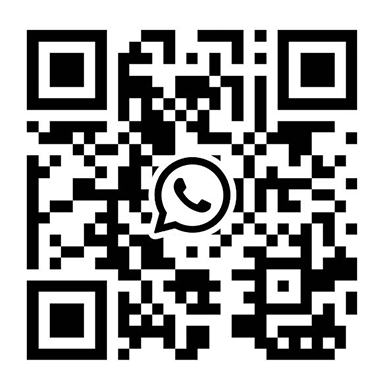In the rapidly evolving field of ophthalmology, the quality of medical equipment is not just a matter of efficiency—it’s a matter of patient safety and clinical accuracy. The purchasing manager plays a pivotal role in ensuring that every piece of ophthalmic equipment acquired meets stringent global quality standards. From slit lamps to autorefractors, the modern ophthalmic clinic depends on precise, reliable, and compliant tools.
This article delves deep into the strategies, protocols, and quality assurance processes that purchasing managers employ to guarantee that ophthalmic devices align with international benchmarks. We’ll explore regulatory frameworks, supplier vetting, certification requirements, and much more.
Understanding the Role of a Purchasing Manager in Ophthalmology
Purchasing managers in the medical field are not just buyers—they are strategic decision-makers. In ophthalmology, their responsibilities include:
- Researching and selecting certified suppliers
- Ensuring compliance with international medical device regulations
- Negotiating contracts and warranties
- Coordinating with clinical teams for technical specifications
- Overseeing logistics and post-purchase support
Their decisions directly impact the quality of patient care, making their role critical in the healthcare supply chain.
Global Quality Standards for Ophthalmic Equipment
To ensure patient safety and device reliability, ophthalmic equipment must adhere to several global standards. These include:
ISO Standards
- ISO 13485: Specifies requirements for a quality management system for medical devices.
- ISO 14971: Focuses on risk management for medical devices.
- ISO 10993: Pertains to the biological evaluation of medical devices.
FDA Regulations
For equipment imported into or manufactured in the United States, compliance with FDA 21 CFR Part 820 (Quality System Regulation) is mandatory.
CE Marking (Europe)
The CE mark signifies that the product meets the safety, health, and environmental protection requirements of the European Economic Area (EEA).
Other Regional Standards
- Health Canada’s Medical Device Regulations
- TGA (Therapeutic Goods Administration) in Australia
- PMDA (Pharmaceuticals and Medical Devices Agency) in Japan
Key Strategies Used by Purchasing Managers
1. Supplier Qualification and Auditing
Before any purchase, suppliers are thoroughly vetted. This includes:
- Reviewing certifications (ISO, CE, FDA)
- Conducting on-site or virtual audits
- Evaluating manufacturing processes
- Assessing past performance and client feedback
2. Technical Evaluation of Equipment
Purchasing managers collaborate with ophthalmologists and biomedical engineers to:
- Verify technical specifications
- Test device accuracy and calibration
- Assess ease of use and integration with existing systems
3. Regulatory Compliance Checks
Each device is cross-checked against:
- Local and international regulatory requirements
- Import/export documentation
- Labeling and language requirements
4. Risk Assessment and Mitigation
A comprehensive risk analysis is performed using tools like:
- Failure Mode and Effects Analysis (FMEA)
- Hazard Analysis and Critical Control Points (HACCP)
- Post-market surveillance data
5. Lifecycle Cost Analysis
Beyond the purchase price, managers evaluate:
- Maintenance and calibration costs
- Software updates and licensing fees
- Spare parts availability
- Warranty and service agreements
Ensuring Post-Purchase Quality Assurance
Installation and Commissioning
After delivery, equipment undergoes:
- Site preparation checks
- Installation validation
- Operational qualification (OQ)
- Performance qualification (PQ)
Training and User Competency
Training programs are arranged for:
- Ophthalmologists and technicians
- Biomedical engineers
- IT support staff (for digital systems)
Maintenance and Calibration
Regular maintenance schedules are established, including:
- Preventive maintenance
- Calibration against reference standards
- Software updates and cybersecurity checks
Leveraging Technology for Quality Control
Digital Procurement Platforms
Modern purchasing managers use platforms that offer:
- Real-time supplier ratings
- Automated compliance verification
- Blockchain-based traceability
AI and Predictive Analytics
Artificial intelligence tools help in:
- Predicting equipment failure
- Optimizing inventory levels
- Analyzing supplier performance trends
Common Challenges and How to Overcome Them
Counterfeit Equipment
To avoid counterfeit devices:
- Purchase only from authorized distributors
- Use serialization and barcoding
- Verify manufacturer authenticity via UDI (Unique Device Identification)
Supply Chain Disruptions
Strategies to mitigate disruptions include:
- Multi-sourcing critical equipment
- Maintaining buffer stock
- Establishing long-term supplier contracts
Regulatory Changes
Purchasing managers stay updated by:
- Subscribing to regulatory newsletters
- Attending industry conferences
- Participating in professional forums
Best Practices for Global Procurement
- ✅ Develop a comprehensive procurement policy
- ✅ Maintain a centralized database of approved suppliers
- ✅ Use checklists for compliance verification
- ✅ Conduct periodic supplier reviews
- ✅ Implement a continuous improvement loop
Real-World Case Study: Ensuring Quality in a Multinational Eye Care Chain
A leading global eye care provider with clinics in 10 countries implemented a centralized procurement strategy. The purchasing manager:
- Standardized equipment across all locations
- Created a global supplier scorecard
- Reduced equipment-related incidents by 40%
- Improved patient satisfaction scores by 25%
This case underscores the importance of strategic procurement in delivering consistent, high-quality care.
Frequently Asked Questions (FAQ)
1. What certifications should ophthalmic equipment have?
Ophthalmic devices should ideally have:
These ensure compliance with global safety and quality standards.
2. How can I verify if a supplier is certified?
You can:
- Request copies of certifications
- Check the FDA Establishment Registration & Device Listing
- Use the EU NANDO database
3. What are the risks of buying non-compliant equipment?
Risks include:
- Patient safety hazards
- Legal and regulatory penalties
- Equipment failure or malfunction
- Loss of accreditation
4. How often should ophthalmic equipment be calibrated?
Calibration frequency depends on:
- Manufacturer’s guidelines
- Usage intensity
- Regulatory requirements
Typically, devices are calibrated annually or semi-annually.
5. What role does post-market surveillance play?
Post-market surveillance helps:
- Identify emerging safety issues
- Track device performance
- Inform future purchasing decisions
It’s a key component of quality management systems.
Conclusion
Ensuring that ophthalmic equipment meets global quality standards is a multifaceted task that requires diligence, technical expertise, and strategic foresight. The purchasing manager acts as the gatekeeper of quality, bridging the gap between clinical needs and regulatory compliance.
By adopting a structured procurement process, leveraging technology, and adhering to international standards, purchasing managers not only safeguard patient outcomes but also enhance the operational efficiency of ophthalmic practices worldwide.
In an era where precision and compliance are paramount, the role of the purchasing manager has never been more critical—or more complex.

